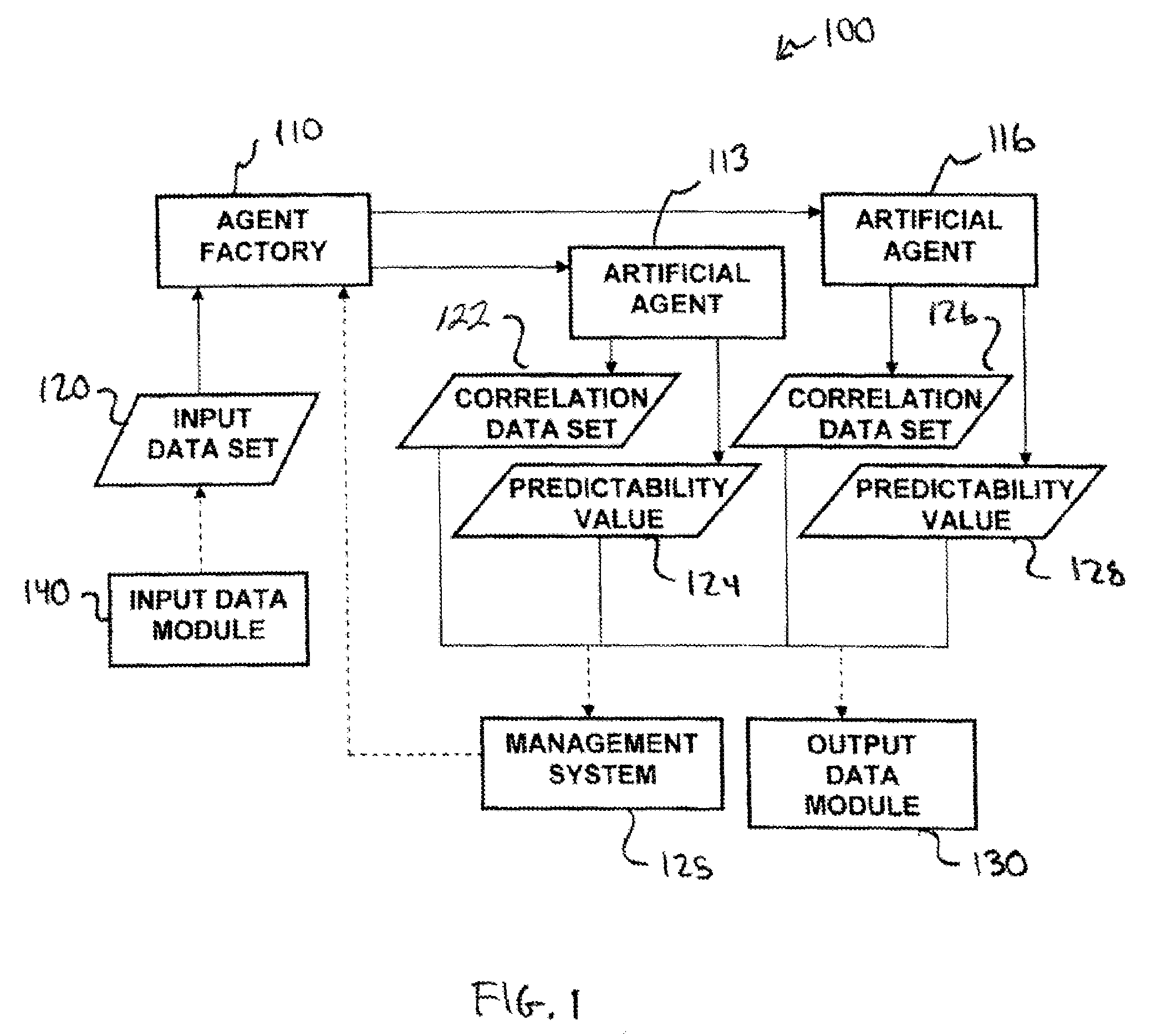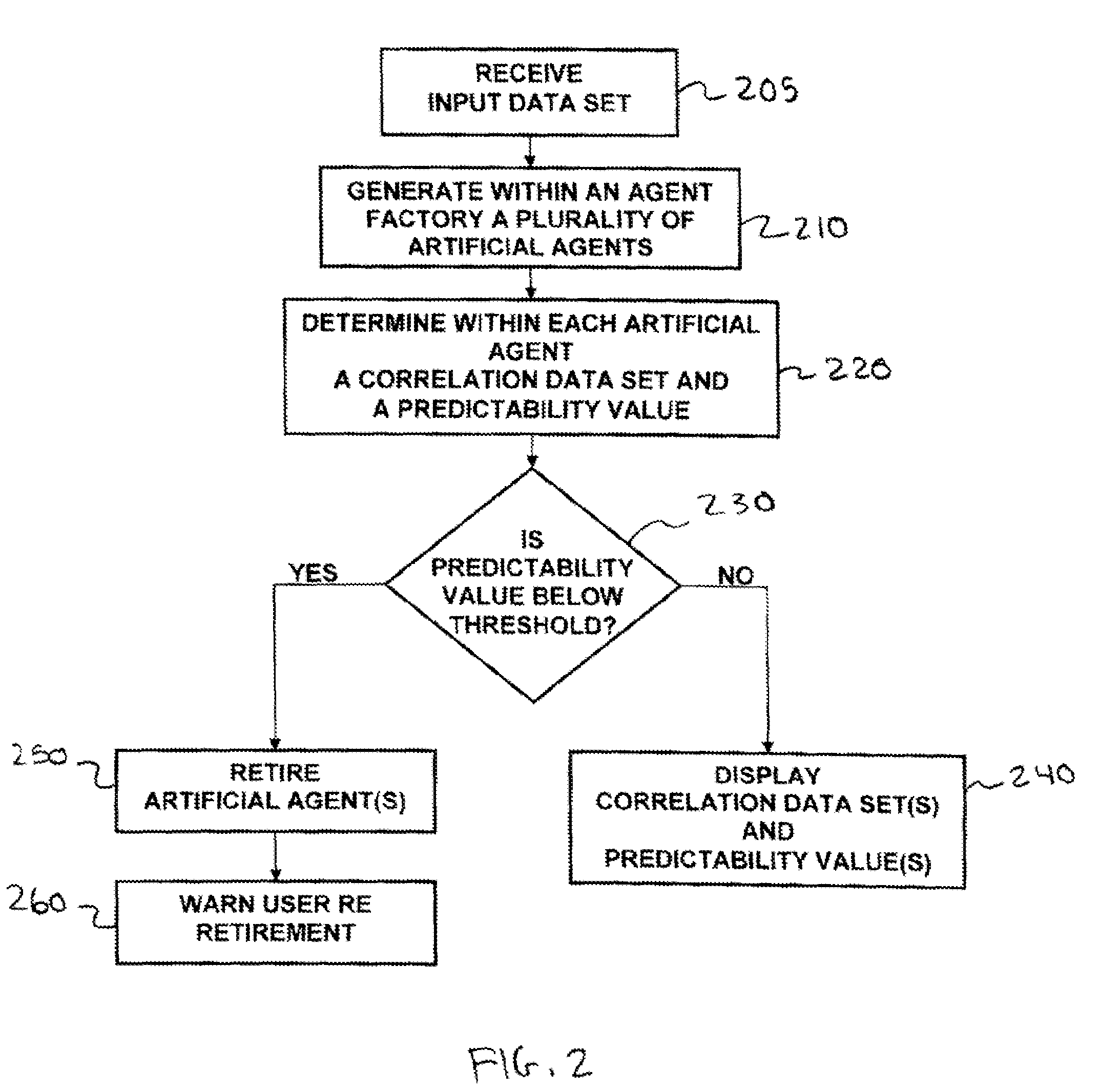Methods and apparatus for predictive analysis
a predictive analysis and method technology, applied in the field of methods and apparatus for predictive analysis, can solve the problems of system not being true predictive system, lack of automation, and insufficient match in the service sector
- Summary
- Abstract
- Description
- Claims
- Application Information
AI Technical Summary
Problems solved by technology
Method used
Image
Examples
Embodiment Construction
[0021]The present invention may be described in terms of functional block components and various processing steps. Such functional blocks may be realized by any number of hardware or software components configured to perform the specified functions and achieve the various results. For example, the present invention may employ various integrated circuit components, such as input-output systems, memory elements, processing elements, logic elements, matchable data structures, databases, and the like, which may carry out a variety of functions under the control of one or more microprocessors or other control devices. Further, the present invention may employ any number of conventional techniques for determining a correlation data set based on various input data sets, determining a predictability value, and / or the like.
[0022]Similarly, the software elements of the present invention may be implemented with any programming or scripting language such as, for example, C, C++, Java, COBOL, as...
PUM
 Login to View More
Login to View More Abstract
Description
Claims
Application Information
 Login to View More
Login to View More - R&D
- Intellectual Property
- Life Sciences
- Materials
- Tech Scout
- Unparalleled Data Quality
- Higher Quality Content
- 60% Fewer Hallucinations
Browse by: Latest US Patents, China's latest patents, Technical Efficacy Thesaurus, Application Domain, Technology Topic, Popular Technical Reports.
© 2025 PatSnap. All rights reserved.Legal|Privacy policy|Modern Slavery Act Transparency Statement|Sitemap|About US| Contact US: help@patsnap.com



